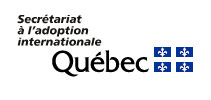Adoption After a Disaster
When there is a natural disaster or a conflict in a particular part of the world, the media provide us with emotionally-charged images of and news reports on abandoned children. These can result in the humanitarian impulse to take in one of the children.
However, immediately thinking of adopting one of those children is not an appropriate response to their needs and rights. In an emergency situation, it is necessary to avoid rushing into things or making alarmist and emotional statements.
In reality, an unaccompanied child who has no close family and has been abandoned to his or her fate is not necessarily an orphan, at least as long as the father's and mother's death have not been determined. Efforts must first be made to find family members, and ensure that the child remains in the country of origin and is raised in his or her culture. In general, a relatively long period of time must elapse before international adoption can be considered.
Remember that international adoption is above all a measure to protect the child, and therefore a last resort solution.
The child's welfare above all
Adoption has many consequences on a child's life. Therefore, all necessary precautions must be taken to ensure that it is truly the best solution.
The child's hurried placement is not advised, even temporarily, whether in a neighbouring country or far away. The experience could be traumatic and cause psychological upheaval for the child.
Therefore, when children are separated from their families everything must be done to reunite them, even if it takes several months for the situation to be clearly established.
Actions in the field
International organizations in the field, including the United Nations High Commissioner for Refugees, take steps to find the members of a same family and attempt to prevent separations. In the event of a separation, they see that the child receives the needed protection and assistance, based on age, sex and history, while seeking to find a long-term solution for the child.
Those organizations ensure that the children reintegrate their families as soon as possible, so they can remain in their country and be raised in their culture of origin.
Experience has shown that a large number of children finally find their parents or are taken in charge by the extended family or a significant person in their environment or community.
For more information, consult the United Nations High Commissioner for Refugees website![]() .
.
Position of the Secrétariat à l’adoption internationale
The Secrétariat à l’adoption internationale (SAI) subscribes to the guidelines established by the international community, which provide that, in an emergency situation, the priority must be to reunite families.
Measures to protect children against fraudulent adoptions must be encouraged and supported. The countries involved also have their own laws and regulations that apply to such situations.
Besides compliance with international adoption standards, evacuation of children in a crisis situation raises the question of trauma to the child and the capacity of adoptive families to deal with it in a short timeframe. That is why processing of adoption files is very often suspended in regions affected by a natural disaster or that are the scene of a political conflict.
In those circumstances, the immediate reaction of the authorities in the various countries, and in Québec, is to establish contact with their usual agents and to remain in communication, in order to follow the situation closely and measure the impact of the event on the adoption plans that are in progress.
